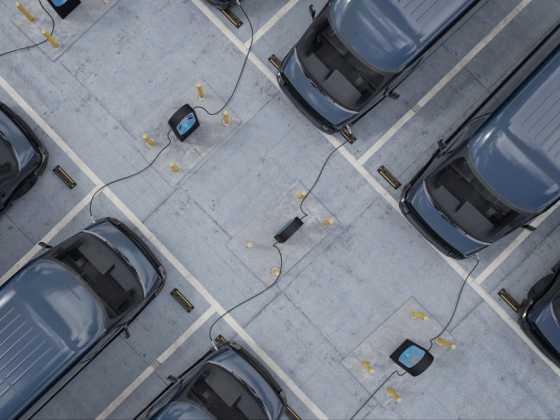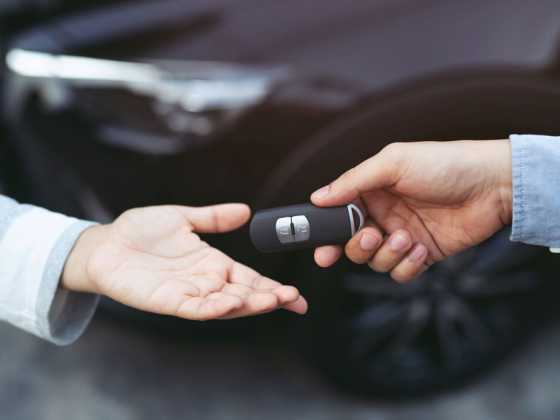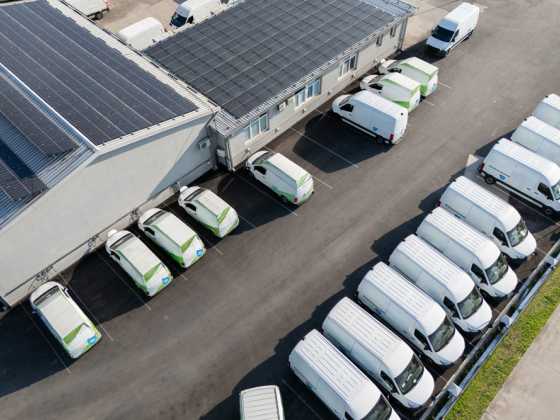Glancing back at old EVs
Electric vehicle technology is seen as the cutting edge of modern vehicle manufacturing, but it is not a new phenomenon.
 Battery Vehicle Society member Roger F de Boer takes a look back at the history of battery electric vehicles and their successes and failures in public and commercial service
Battery Vehicle Society member Roger F de Boer takes a look back at the history of battery electric vehicles and their successes and failures in public and commercial service
Aside from a trial in 1882 in London, by far the most successful UK tramway using battery traction was the Birmingham Central Tramway Co. (1890 – 1901) running twelve open-top cars from the city centre to Bournbrook South West from the city.
The first battery electric bus in regular service was in London between Charing Cross and Victoria (1891). Later buses appeared but only experimentally. The Electrobus Co. of London imported a chassis and motor (Thomson-Houston) from Paris in 1906 and fitted it with locally-built body. From 1907 the fleet expanded to twenty buses extending its original route from Liverpool Street to Fulham but went into liquidation by 1909 – they had problems in obtaining spares.
Brighton enjoyed more success using some second-hand Electrobuses lasting until 1916, but it was Lancaster who commenced service in the same year and whose Corporation powered its trams also with the use of 22‑seat Brush-bodied Edisons. The virtue of these vehicles were found to be in their economy as they were cheaper to run than a petrol bus.
West Bromwich Corporation tried to run a service for two years (1917 – 1919) but World War I itself, strikes and delayed delivery of the then American chassis (Edison) coupled with the ridicule of their slowness sealed their demise. On the same grounds of slow motion York’s electrics were replaced by petrols in 1922. Liverpool enjoyed more success with their one man operated 25-seater in 1925 (a Walker).
The extension of trolley and motorbus routes saw battery buses obsolete by the 1930s and little developed until the 1970s.
Trials and experiments
There were a number of trials in 1972 to 1974 with two Crompton – Leylands (midibuses) which were used in fourteen cities and towns including Birmingham, but they were not used much and had both been scrapped by 1987.
In 1974 SELNEC experimented with a Chloride-Seddon SILENT RIDER between Manchester and Birmingham. It went to a museum however.
A 1973 Leyland National integrally‑built bus (chassis and body together) was converted by Ribble to run on the Runcorn busway (Cheshire) in 1975 (batteries towed in trailer behind bus).
In 1981, a Dodge midibus was used in Bournemouth but confined to a central route – I remember this being done and also the Crompton used on Birmingham’s Centrebus service. I also remember the SELNEC vehicle at the Birmingham end of the route (as a Brummie).
Between 1993 and 1995 there was a bus retrial in Oxford where comparison was made between electrics and diesels. The electric buses were confined to the city centre but due to technical problems and lack of funds they were abandoned.
In 1998, former milk floats with M and M cabs from Birmingham Co-op and on Morrison chassis were converted to minibuses and exported to Nepal an a pollution reduction experiment. Similar floats have been converted to minibuses and used to carry tourists at resorts such as Polperro in Cornwall.
With passenger transport battery traction was not long used in service – more on a trial basis. The routes were restricted due to the need to recharge the batteries. In Victorian times lead acid batteries were used. Not only heavy and large the acid would spill and where bench seats were used passengers were exposed to fumes.
Goods vehicles & refuse trucks
Moving away from passenger transport for a moment, electric goods vehicles appeared from about 1908 – they were either 5 to 12 tons for heavy use or 1 tonners – mainly vans. Railways and breweries were large users but sometimes forgotten were the refuse lorries – the big three patrons of these were Sheffield, Birmingham and Glasgow. With Sheffield already using EVs, their manager – James Jackson – moved to Birmingham who bought their first battery electric for waste collection in 1919. The method of waste disposal at this time was by incineration and recycling. The destructors were at five depots in Birmingham.
The heat produced by the fire was harnessed to make electricity which in turn charged the batteries of the collecting lorries. There was great economic saving by using EVs over the horse and tests in Birmingham showed this.
The last electric dustcart ran in Birmingham in 1971 but their 50 years’ success was proven by seeing a line-up of diesels in the scrapyard the previous year. (Long Marston). It was ironic that in 1971 the diesels were waiting for spares from Germany whilst that winter would have presented no problem for the EVs to start. Incineration is surely preferable to landfill.
Electric vans
The 1-tonne vans were firstly imported from America, like Walker of Chicago – two firms opened works in Birmingham – Edison and G.V. The vans were popular with London stores and were used for their quiet reliability rather than economy.
Harrods first van was in 1913 – I wrote to the store in the 1980s (post al-Fayed takeover) and was impressed that the vehicle records going back to 1913 were still held. That the history was retained is commendable. The sixty-strong fleet was replaced when Harrods rebuilt their vans during the war (1940).
Apart from the users already mentioned no great impact was made – there being no more than 1752 EVs by 1930 (compared to 7,750 steam-driven vehicles and 335,000 petrols).
Their numbers were still declining in 1933 but then a niche was found in milk, bread and laundry roundsmens’ vans/trucks.
Leicester could boast a number of EV manufacturers – Brush of Loughborough, Morrison, Wilson and Harbilt in the city. After the war Smiths/NCB of Gateshead were popular and the same year (1948) Dinky Toys produced what became dubbed the Dinky Toy Milk Float.
I visited the Birmingham Co-op in 1975 and copied out all the details of their EVs since 1933 and it took me six months (Saturdays) to record some 1,300 vehicles as milk, bakery and laundry vans. The latter two types were converted to milk float as they became redundant in their original use.
The revival in the EV was based on door‑to‑door delivery but the rise of the supermarket after the war was to encroach on the milk and bakery rounds through their selling of cheaper goods. It was the laundry vans which succumbed firstly however once the washing-machine had entered most homes.
In 1975 the city of Worcester had 100 dairy EVs on retail rounds (65 Co-op and 35 from Bennetts Dairies) – now in 2014 there are none. My own milk is now delivered by a hired diesel van – the milkmen dislike the slowness of the EV but it scores in the stop/start situation (diesel trucks got through a starter motor in three months).
Competition
Within the manufacturing industry itself there was competition as the demand for EVs lessened. Three firms are worthy of mention – EVS of Brownhills Staffs, M & M of Atherstone and Henry Bugden of Brighton.
Electric Vehicle Services of Brownhills reconditioned chassis by buying old milk floats stripping off the bodies and placing new fibreglass bodies upon the chassis using the Marsden (same shape as float which used to appear at the beginning of Coronation Street) cabs. This happened with some former Derby Co-op trucks which were re-registered and sold to Birmingham Dairies.
M & M of Atherstone, Warwickshire also known as Electricars founded by two brothers named Mason who had previously worked in the Birmingham Co-op vehicle workshop on bodies. They bought former milk floats/vans, took off the bodies and placed their own cab and body which was a kit. The sturdiness of an EV chassis allowed this because it had been built to withstand the weight of heavy batteries in the first place. They were so successful that they took over Crompton of Tredegar South Wales who were a builder of new vehicles but who at their end were assembling rather than building chassis.
Several thousands of pounds had still been left in the safe when M & M walked in.
Henry Bugden of Brighton rebuilt floats using Morrison BM chassis supplied by Jobs’ Dairies – his largest customer. He used a Manulectric cab and his own solid-tyres wheels (1960s) – over 200 rebuilds had been completed by 1968. His wheels were also supplied to Kirby & West Dairies of Leicester who built their own floats from scratch – I remember seeing one of these austere vehicles in the last ten years at South Wigston and from its registration plate it was 50 years old illustrating the possible longevity of an EV even if it is home-made.
The battery vehicle is not much now used in door-to-door collection/delivery – but may still be found with hospital internal transport where it is suitably quiet and as baggage tractors at airports.
One less successful EV manufacturer was Midland Electric Vehicles of Leamington Spa (1935 – 1958). With links to Garner of Birmingham – the 20/25 cwt float was its staple production – nevertheless a favourite of mine. Their design did not change since the 1930s. It enjoyed patronage from Midland Counties Dairy of Coventry Birmingham and Wolverhampton (later Unigate) – on the end of production MCD bought three chassis which they built as rebuilds. The person who bought them out only wanted their premises and trade declined – with the death of a manager enthusiasm was lost. A local milkman received a new float from them but was not billed for 12 months.
Back to buses
Returning to the bus front there may be hope for improvement. EVs can bring benefits of clean air in cities, which is helped further when the electricity is not generated from fossil fuel sources. In Milton Keynes there is an experiment with 8 Wrightbus electrics where wireless recharging can be used on fixed route.
Also there is growth in hybrid buses relying on an electric motor combined with a small diesel engine as alternative traction.
Sources: Birmingham’s Electric Dustcarts by Roger de Boer (1990)
Road and Road Transport History Association: Companion to British Road Haulage History (2003)
Companion to Road Passenger Transport History (2014)
To which the author has made joint contributions






